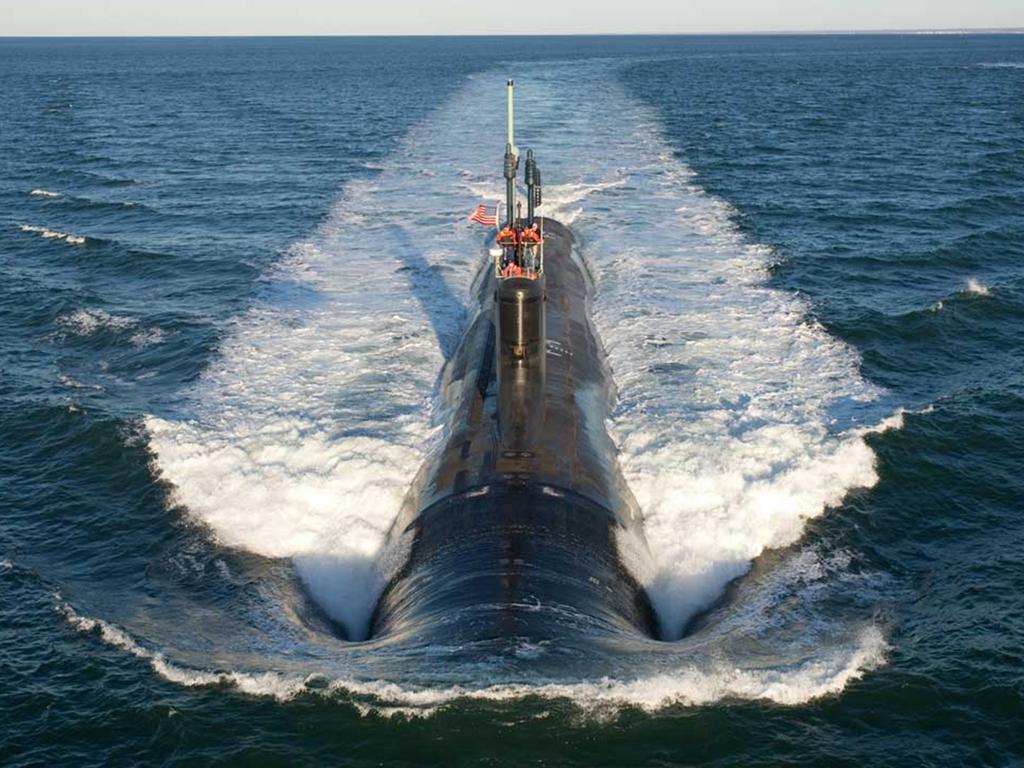Dutton’s wrong – conventional subs are the smart move

Let’s set aside the fact the Opposition Leader’s nuclear-powered submarines are due for delivery in two decades, a situation akin to assembling a really good football team well after the grand final has been played. Let’s also set aside the unaffordable $171bn cost that will bankrupt the navy. I’ll come back to that.
Dutton starts his argument on pride grounds. He misleadingly boasts “the US had only ever shared their nuclear submarine technology with the UK – and that was in 1958”. The truth is, in the late 1950s the US offered nuclear-powered submarines to several other NATO members including the Dutch, Italians and Canadians. They ultimately decided, as we should, to walk away from the US proposal.
Dutton suggests a diesel-electric submarine would not be able to compete against the Chinese in the South China Sea in 2035 and beyond. Japan, South Korea and Singapore, countries in that region, all using air-independent propulsion submarines, clearly disagree. Countries facing the potential of a high-end conflict with the Russians in the European theatre are the same. Norway, Sweden, Germany, Spain, Portugal and Italy are all using AIP submarines. Israel, a nuclear-capable state, has chosen AIP submarines.
The Opposition Leader suggests diesel-electric submarines need to come to (just below) the surface (and stick up a snorkel mast) to recharge their batteries, exposing them to detection. This is true. This once-a-day “snorkelling” activity is the achilles heel of conventional submarines. But the new AIP submarines can go for up to three weeks without the need to snort.
Dutton says nuclear-powered submarines lurk at great depths for months at a time and therefore are difficult to detect. AIP subs go just as deep as nuclear-powered subs and also can lurk in an area for months, with their hydrogen fuel cells and Stirling engines allowing them to avoid daily snorkelling for about half of their typically six to eight-week patrol periods.
Submarines operating on AIP are quieter than nuclear submarines, which have to keep their reactor cooling pumps running and also have large meshing gears between their steam turbines and propellers. AIP submarines are better at shallow water operations than their larger nuclear cousins.
To address the lateness of the nuclear-powered submarine capabilities’ arrival in Australia – that is, in 2040 – Dutton suggests the US might give us two nuclear-powered submarines this decade.
This goes against all the advice provided to congress for the past decade by Congressional Research Service naval affairs analyst Ronald O’Rourke, who has revealed that US shipyards are failing to meet the build needs of the US Navy. The idea that the US will delay its nuclear-powered submarine program further by prioritising construction of Australian boats at their already up-to-capacity shipyards is an unlikely proposition.

Conventional boats, including our Collins-class submarines, often defeat nuclear-powered boats in submarine versus submarine exercises. AIP boats cost significantly less than nuclear-powered boats. For a comparable price, an enemy commander can face one nuclear-powered submarine conducting an operation and delivering weapons in one location or four AIP submarines conducting operations and delivering weapons in four locations.
We no longer have the luxury of time in determining our future naval sub-surface capabilities. The future submarine program kicked off in 2009 with construction to start in 2016. Thirteen years have passed with $4bn spent and no progress towards construction of a new submarine. Each new program suggested by Defence costs more and takes longer. Admirals with little experience in project management make risky recommendations to ministers with no experience in project management.
We can’t afford the AUKUS nuclear-powered submarine project from a national security perspective. While people talk about 2040 as a delivery date, we ask our brave and committed submariners to venture into the South China Sea and other areas to conduct dangerous intelligence collection operations in boats that have the achilles heel Dutton highlights. This is not about 2040. It’s about operations now. Dutton’s submarine program will put our submariners’ lives at unnecessary and unjustifiable risk.
Finally, we can’t afford a $171bn monolithic program that delivers one capability. For $30bn Australia could have 20 modern off-the shelf AIP submarines built in Australia, enhanced by Australian industry, and we’d have $141bn to spend on other much-needed capability: fuel stocks, war stock, antitank missiles and shoulder-fired anti-aircraft missiles, long-range rockets and other artillery systems, utility helicopters, more fighter jets, a $40bn industry resilience package, a national shipping fleet – the list goes on.
Irrespective of how much kicking and screaming that will come from our admirals, the same admirals who steered our country into the current quagmire, it’s time to take the least risky pathway to deliver our navy a modern submarine capability so our submariners can deliver Australia a strong deterrent capability now.
Rex Patrick is an independent senator for South Australia. He is a former submariner.






Peter Dutton is worried the new Labor government will torpedo the AUKUS nuclear-powered submarine program. Last week he laid out his rationale for the scheme which, sadly for him, had enough holes in it to sink the submarine deal by itself.